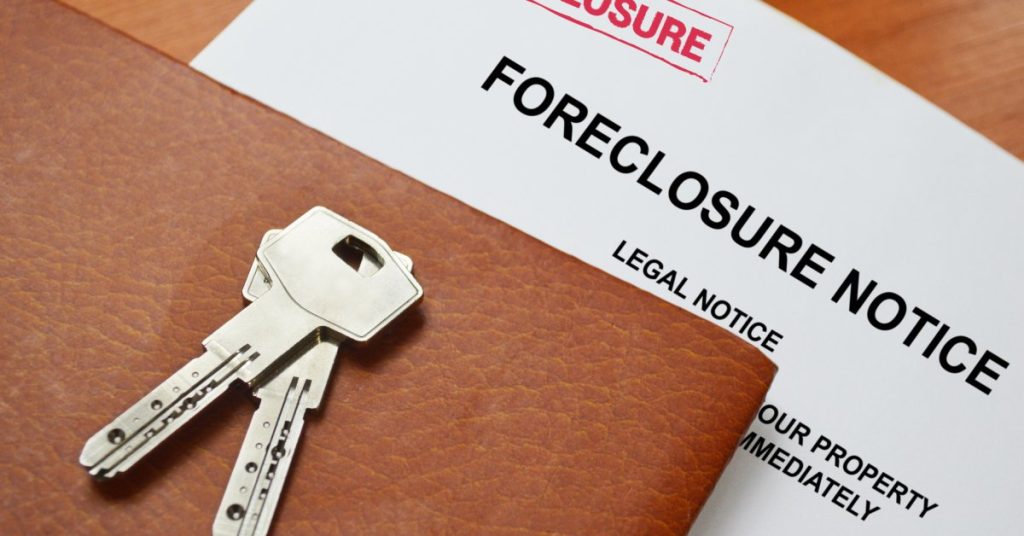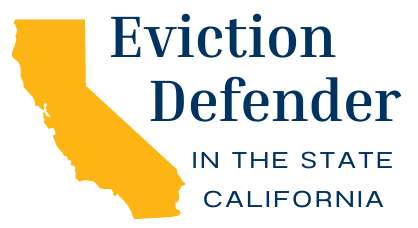
Foreclosure is a worst-case scenario for mortgagors. However, California’s nonjudicial foreclosure process adheres to legal requirements and timelines that offer homeowners rights and opportunities to save their properties.
Even if you’ve been given a foreclosure notice, you’re not out of options. In this guide, we’ll explain how to avoid foreclosure on your house in California and where to turn to for help.
Understanding the Initial Notices
Notice of Default
When you fall behind on mortgage payments, your lender will issue a Notice of Default after several unfulfilled payments. This document serves as the official start of the foreclosure process and becomes part of the public record. The Notice of Default must include specific information about the amount you owe, including principal, interest, fees, and costs.
You typically receive this notice after missing three to four monthly payments, though the exact timing depends on the loan agreement terms. Lenders must record the notice with the county recorder’s office and mail it to you at least 30 days before taking any further action.
Notice of Trustee’s Sale
If you don’t address the default during the reinstatement period, your lender will issue a Notice of Trustee’s Sale. This notice sets the specific date, time, and location where they will auction off your property. Mortgagees must schedule the auction for at least 20 days from publishing the first notice, giving you additional time to take action.
Lenders must post the Notice of Trustee’s Sale on your property in a conspicuous location and publish it in a local newspaper for three consecutive weeks. Then, they must record the notice with the county recorder’s office.

Immediate Actions To Take
Contact Your Lender
The moment you receive a Notice of Default, contact your lender immediately. Many borrowers make the mistake of avoiding their lender when facing financial difficulties, but communication opens doors to solutions. Lenders frequently prefer to work with borrowers rather than complete the foreclosure process, which costs them time and money.
When you call, ask to speak with the loss mitigation department. Prepare to discuss your current financial situation honestly, including any changes in income, unexpected expenses, or hardships that led to the missed payments.
Seek Housing Counseling
Approved housing counseling agencies provide free foreclosure prevention counseling throughout California. The counselors understand the foreclosure process and can help you evaluate your options objectively and communicate with your lender.
Housing counselors often have relationships with lenders and understand which programs might work best for your situation. They can help you organize your financial documents, prepare for lender conversations, and understand the pros and cons of different solutions.
Loan Reinstatement
Understanding the Reinstatement Period
One way to avoid foreclosure on your house in California is by fulfilling your missed payments, late fees, penalties, and foreclosure costs during the reinstatement period. California law provides a 90-day reinstatement period after recording the Notice of Default. During this time, you can stop the foreclosure process by bringing your loan current.
The reinstatement right exists until five business days before the foreclosure sale. This timeframe gives you multiple opportunities to gather funds and cure the default, even after the initial 90-day period expires.
Calculating the Reinstatement Amount
To reinstate your loan, you must pay the total amount your account owes to make it current. This includes all missed principal and interest payments, late fees, property inspection fees, legal fees, and other costs your lender incurs due to the foreclosure process.
Request a written payoff statement from your lender that details exactly what you owe. Always verify the exact amount and confirm how long the quote remains valid before making payment arrangements.
Strategies for Securing Funds
Consider various sources for reinstatement funds, including family loans, retirement account withdrawals, or selling other assets. If you’re expecting funds from a specific source like a tax refund, inheritance, or bonus payment, communicate these timelines to your lender. Many lenders will consider delaying the foreclosure sale if you can demonstrate a realistic plan for obtaining reinstatement funds.
Exploring Loss Mitigation Options
Loan Modification
Another way to stop foreclosure in California is by adjusting the original loan terms to make them more affordable. Modifications can include reducing your interest rate, extending the loan term, or adding missed payments to the loan balance.
Adjustments require demonstrating financial hardship and showing that you can afford the new payment terms. The application process involves submitting extensive financial documentation, including income statements, tax returns, bank statements, and a hardship letter explaining your situation.
Forbearance and Repayment Plans
Forbearance allows you to temporarily reduce or pause mortgage payments while you recover from a financial setback. This option works best when your hardship is temporary and you expect your income to return to previous levels.
Forbearance doesn’t eliminate missed payments but gives you time to address the underlying financial problem. Repayment plans spread your missed payments over several months, adding a portion to each future payment until you’re current.
Legal Protections and Rights
Right to Information
Mortgagors can’t forget they have undeniable rights during this process. For example, you have the right to request detailed information about your loan and the foreclosure process from your lender. This includes the right to know who owns your loan, the total amount necessary to reinstate, and copies of all notices sent regarding your account. If you believe errors exist in the foreclosure process—incorrect payment calculations, improper notice procedures, or violations of federal lending laws—you have the right to dispute these mistakes.
Challenging Foreclosure Procedures
California law requires lenders to follow specific procedures during foreclosure. Any deviation from these requirements can provide grounds to challenge the foreclosure. This might include improper notice timing, incorrect recording procedures, or violations of federal regulations like RESPA or TILA.
You can also challenge foreclosures based on predatory lending practices, loan servicing errors, or violations of military service member protections. These challenges require legal expertise and supporting documentation, but can stop or delay foreclosure proceedings.

Seeking Professional Assistance
Housing Counselors and Legal Aid
Housing counselors provide free services to help mortgagors understand their options and communicate with lenders. These professionals stay current on available programs and can help you determine which solutions might work for your situation.
Legal aid organizations throughout California offer free or low-cost legal assistance to qualifying homeowners. These attorneys can review your case for legal defenses, help negotiate with lenders, and represent you in court if necessary.
Eviction Defender in the State of California
At Eviction Defender, we help renters facing eviction and mortgagors facing foreclosure. We specialize in providing personalized support and guidance to help individuals navigate the foreclosure process, explore their options, and work toward saving their homes. With expertise in complex loan modifications, legal defenses, and lender negotiations, Eviction Defender offers the professional advocacy borrowers need to improve outcomes.
Take Action To Protect Your Home
The foreclosure process in California offers opportunities to save your home through options like loan reinstatement, modification, or other workout solutions—but time is of the essence. Don’t wait and don’t tackle this alone. Eviction Defender can guide you through your rights and create a strategy to protect your home. Call Eviction Defender today at (818) 307-1308 to save your home with our expert foreclosure services.
